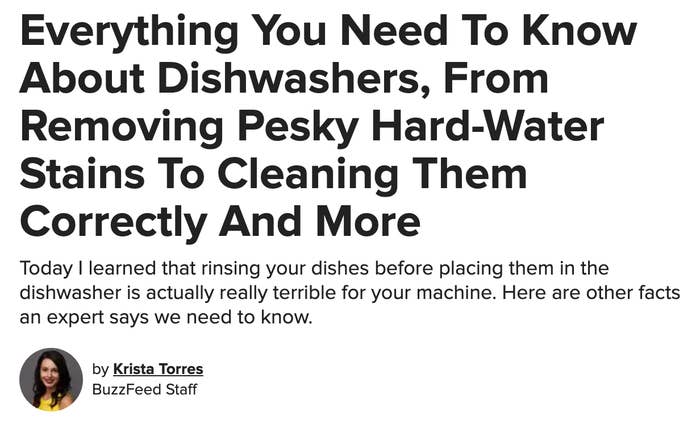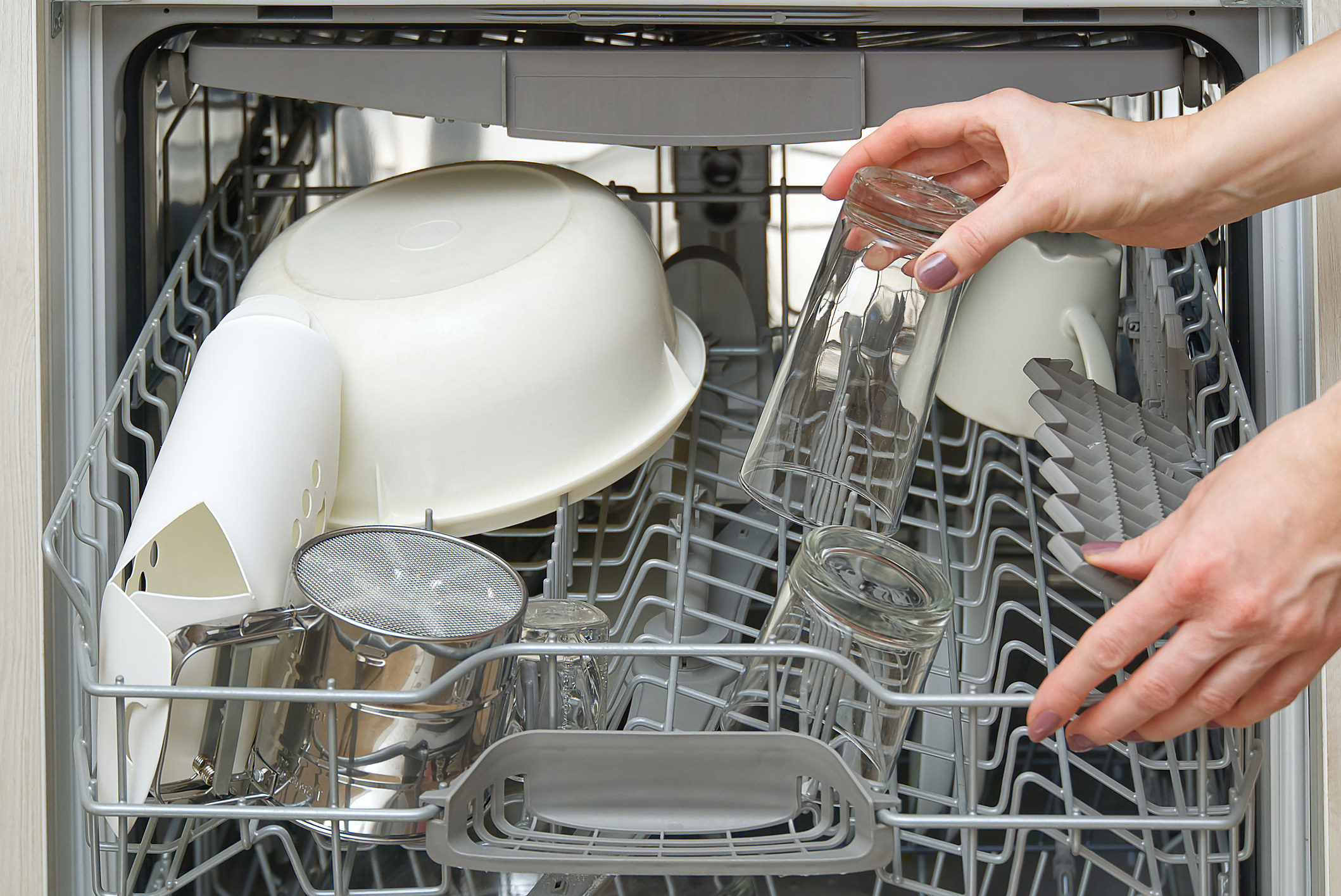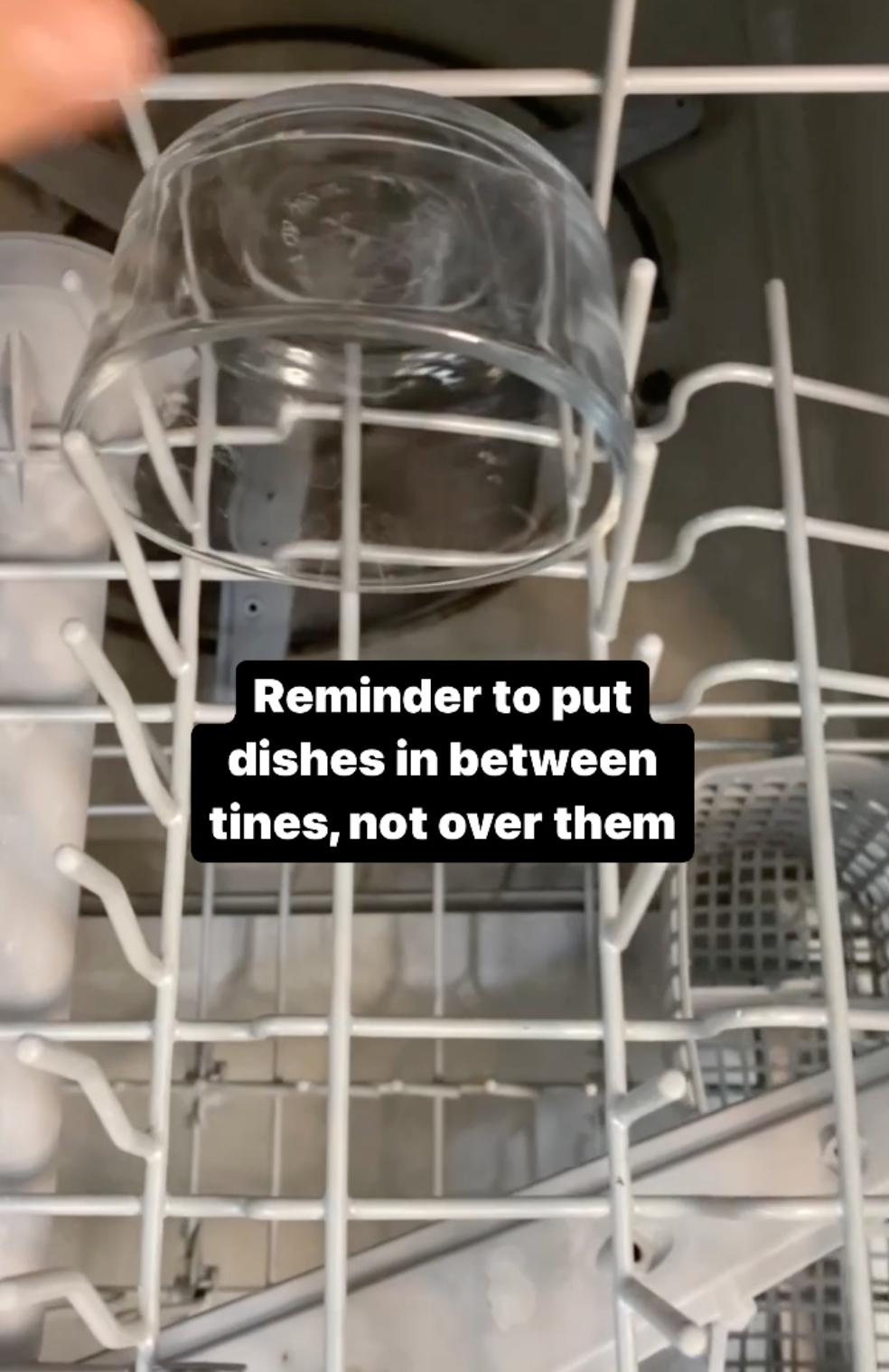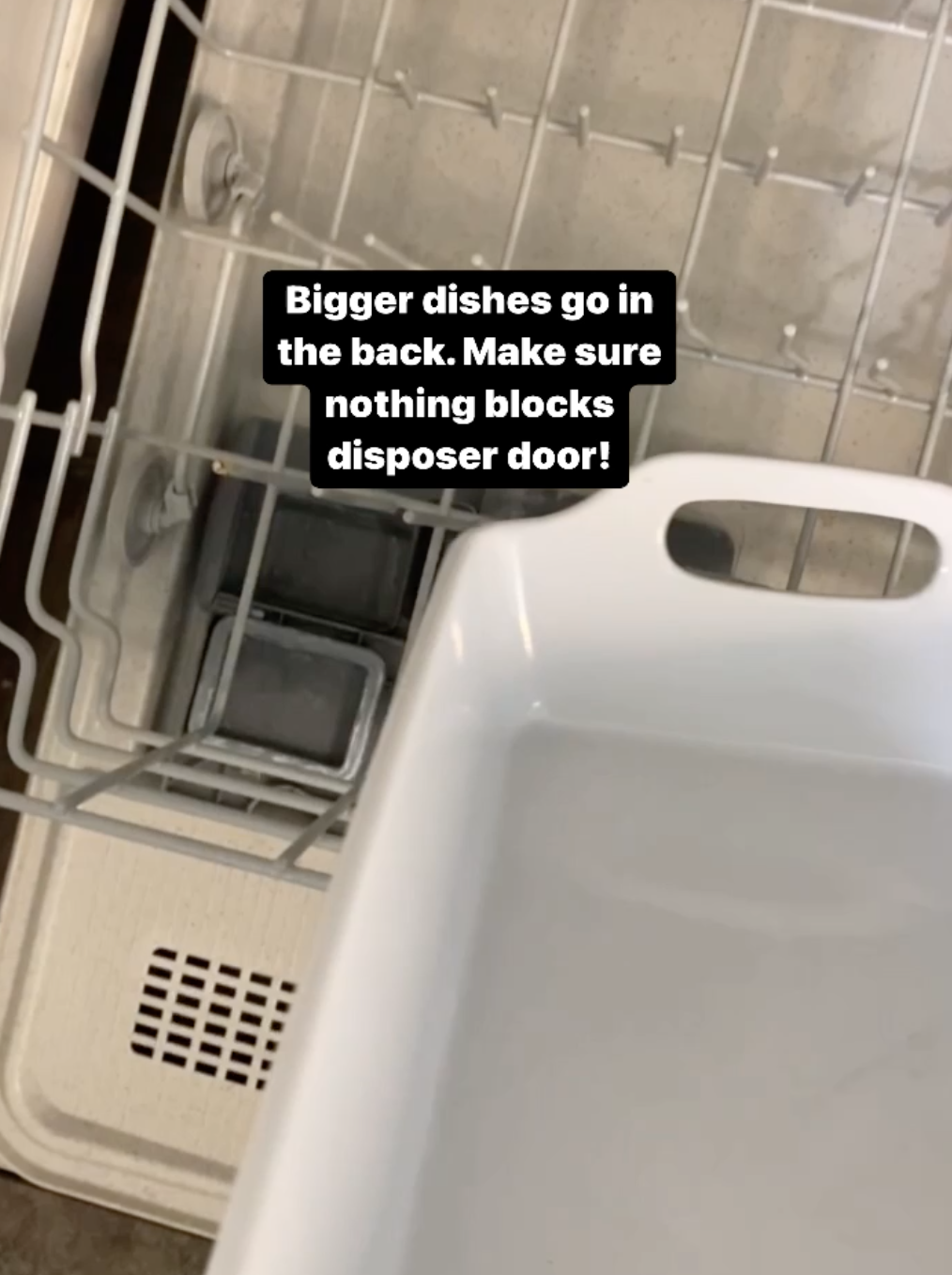Hi, I'm Krista, and welcome to another day of me thinking, WELL, IT WOULD HAVE BEEN NICE IF THEY TAUGHT THAT IN SCHOOL!
So as your designated BuzzFeed mom, I am here to help us fill in the gaps with helpful how-tos using information from credible resources and experts. (I know this GIF is extremely overused, but it fits, sorry.)
I recently talked with Renae the Appliance Repair Tech about everything we need to know when it comes to caring for and cleaning your dishes with a dishwasher, but one important thing we didn't cover is how to properly load a dishwasher.

Now, using credible resources and Renae's insight, I've come up with a list of the main things you need to do to get the best clean:

If you didn't know, dishwashers have two sets of spray arms that blast the dishes. So you want to make sure your dishes are facing toward where the water comes out (nearly all dishwasher spray arms circulate and dispense in the middle).

Always angle dishes down, since the sprayer arms dispense up. Some dishwashers have curved shelving on the top so that your mugs can angle, and water doesn't pool at the top.


If you don't know what the tines are, they are the prongs that stick up. The tines are designed to help all the dishes face toward the middle of the dishwasher for the best clean.


This is simply because you don't want knives to poke you — and placing the spoons and forks up allows more water and soap to hit them so they get more clean.


If you have tall items on the bottom rack, make sure they aren't hitting the above spray arm, because then it can't spin to clean the dishes!


Make sure there's nothing against the dispenser door or blocking it from opening. You always want to keep that area open so that the soap can be dispensed properly.

